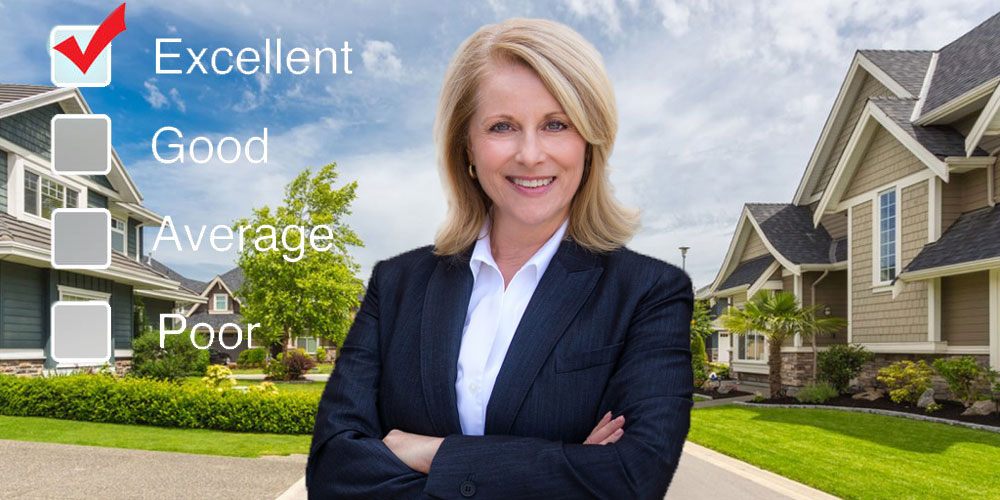Real estate farming is a strategy many top realtors use to brand themselves as an authority in a particular area. Becoming the go-to agent of a specific community is neither easy nor fast to reach. In that case, why do agents turn to a real estate farming strategy? It’s a no-brainer; because it works!
Geographical real estate farming is a powerful prospecting method. Rather than trying to be all things for all sellers and buyers, it would be wiser if you invest your time and budget in knowing more about your target audience. The idea of farming in real estate is very similar to planting seeds. You choose the target neighborhood, identify the properties that can be good candidates for sale, build solid relationships with the owners who are the possible future sellers, and eventually, when the time comes, harvest the transactions.
What is real estate farming?
Real estate farming is a marketing technique used by many successful real estate agents to develop business in a particular area or market demographic. As the name suggests, they are farming for real estate leads and calls. This can include direct mail, knock-ons, postcards, newsletters, emails, or any other form of targeted advertising.
Homeowners like to keep what their home is likely to value in current market conditions, even if they are still not seriously thinking about selling it. If you’ve done their business successfully, they’ll remember you when they think about it.
Farming for real estate agents requires a continuous relationship with potential customers and community participation. When they need real estate, they will think about you first.
Does real estate farming work?
Real estate farming is a useful marketing strategy because you target a certain set of homes with a message that adds a certain value. The higher the number of homes, the less likely it is to send messages that appeal to all homeowners in your farm area.
A real estate farming strategy is a marketing strategy that includes planting, nurturing, and cultivating clues. It is not uncommon for farming to take place in a coessential home. It is very important to take into account the size of the farming area, turnover, competition, demographics, and location. Before you commit to farming, it’s best to do a local search on Google or the Census Bureau. By focusing on one of your real estate farm areas, make sure you focus on a particular market.
How to pick a farm area in real estate?
Your farming area depends on size, turnover, competition, demographics, and location. Here are seven steps that will help you choose the farming area that has the most return on capital.
- Choose a real estate farming area close to your home.
- Research your real estate farm area.
- Limit your real estate farm area to focus on a niche.
- Consider the size of the real estate farming area.
- Choose a geofarming real estate area with designated boundaries.
- Check out rival real estate farming agents in the region.
- Compare multiple areas when farming real estate
Advantages of Real Estate Farming

Real estate farming is a long-term and costly investment. But, due to a couple of reasons, you should consider deploying this marketing approach. The convenience of location is the first reason. If most of your listings and sales are concentrated in one area, you no longer have to travel between the clients. It gives you more freedom to better serve your clients which will result in clients’ satisfaction and enhance your service image.
Another advantage of real estate farming is that familiarity with the target market gives you an advantage over outside realtors. You don’t have to do extensive research on local facilities and amenities, schools, neighborhood status, or community activities to answer the buyers’ questions. Having a deep understanding of the target market is a huge asset for a real estate agent. Trust-building is neither an easy nor a quick process, but providing your clients with a great deal of useful information only an insider helps you position yourself as their agent of choice.
Long-term relationships are the foundation of any business. The more you focus on your real estate business in a specific area, the more recognition you will gain. Real estate farming is a great strategy to keep yourself front of mind in a community as a highly knowledgeable agent. Besides, increasing clients’ satisfaction and loyalty to a great extent, real estate farming can boost your client referral traffic and generate more leads.
Real Estate Farming Ideas for Realtors
There are some realtor farming ideas as below:
Analyze the Market
Finding the right value for a property is a crucial part of your job as a real estate agent. Whether searching for a new home or placing their property for sale, people come to you to get the best possible price. If done intensely and accurately, Comparative Market Analysis (CMA) allows you to find the real value of a property based on the recently sold, similar properties in the same neighborhood. With a comprehensive report containing active listings, pending listings, sold listings, and off-market data, you can pinpoint the highest price for your listings.
Keep Your Clients in the Loop
Are you the kind of agent who strongly believes that print marketing is just a waste of paper and money? In that case, I think you’d better reconsider. Believe it or not, distributing the Just-Sold, Just-Listed, and Coming Soon flyers door to door gives you more ways to stay first of mind with local prospects. Your clients will appreciate your hard work to get the homes sold.
Get Prepared for Cold-Call

Many local experts believe that telephone calls can result in more leads than any other real estate farming idea. Even if you are not the biggest fan of cold-calling, it’s worth a try. To increase the chance of closing more deals, call around the neighborhood and tell residents about the coming soon, price reduced, back on market, and showings.
Go for FSBO and Expired Listings
Real estate farming is a potentially lucrative strategy. Staying continuously in contact with people living in the target neighborhood allows you to identify FSBO properties and expired listings and turn them into new sales opportunities. There are many desperate sellers out there whose properties are not selling without your help. It is a real opportunity for you to show these sellers working with a professional agent can generate incredible buyer traffic.
Host Open Houses

Open house events are one of the oldest ways to increase the listing’s exposure. Even modern technology like realistic 3D tours, live videos, and high-definition photos can’t fully replace personal visiting experiences. Remember that open houses are not just for increasing buyer traffic to a listing but for meeting and building relationships with your future clients. Don’t forget to set up eye-grabbing directional yard signs in front of the house to attract as many potential buyers as possible to your event.
Remember that the design and quality of your outdoor signage can either make or break you. Personalized marketing tools always go a long way. If you have no idea how to design an outstanding branded real estate sign, look no further. AgentPrint offers what you are looking for.
Send Email Campaigns

Making connections with prospects is a crucial step toward successful real estate farming. However, what matters most is how long one can maintain a relationship. With countless new businesses starting up every day, it is no surprise to see your loyal clients going to other agents. Creating an email database of residents of an area is one of the cheapest and easiest ways to stay in touch with local prospects.
Whenever you call or meet a seller or buyer, ask for their email address. That way, you can provide them with regular updates about the latest market trends, market news, new sales, listings, and any other relevant information. Many potential sellers out there are interested in knowing how their house is changing in value.
Throw Block Parties
Now that you have successfully established yourself as the area’s expert, it’s time to spice up your business with a block party. Public amenities such as a community pool or a park can be a nice place to invite everyone in the neighborhood and make more touch. Remember to market your event in advance through flyers, phone calls, social media, or your website.
Real Estate Farming Techniques for Realtors
These techniques as the best real estate farming techniques reveal the science of farming in real estate to help you dominate the market and control your farm area:
Start With A Conversation
Geographical and demographic search (known as ‘farming’) is when you focus much of your exploration efforts on a particular area or customer type.
If you’ve farmed in a region before, you’ve probably used traditional marketing such as postcards, ads, market reports, and email. These efforts create businesses, but do they provide you with fixed listings? Perhaps that’s why you’ll be concerned about when you’ll see your next commission check.
You must have quality conversations. Whom do you trust to sell your home? How many random agents are on a flier? Who takes the time and calls you? Or better yet, someone knocking on your door to introduce themselves directly? Whether over the phone, in an open house, or face-to-face on a doorstep, having a strong voice distinguishes you from other “ad-only” agents.
The Right Time For Farming
First important things. It’s time to put your real estate agent farming strategy on your busy (pre-planned) schedule. How you split your day and optimize your clue stack is essential to maximize your day and search sessions.
The times and types of clues to your schedule will vary depending on your market, but assigning 2 to 3 hours a day to realtor farming will allow you to create new connections, build neighborhood relevances, and market your current listings in different areas.
“Land and Expand” in Hot Markets
The more experience you get, the more opportunities you will have to test a variety of farming techniques. One of the things you can do directly from your office is called “land and expansion.”
Start by searching neighborhoods with high turnover rates (the number of homes listed to the number of homes sold in the last three months), then use geospatial search software to drop the PIN in the center of that neighborhood and contact the nearest 100 to 250 neighbors following this script:
‘Hi! I’m [Your NAME], a local real estate agent with [YOUR BROKERAGE.] because there’s been a high turnover rate for homes in your area in the last 90 days. I sell houses [faster, for more money, with fewer headaches, etc.] than [%%] of representatives in the area. Do you know anyone looking to buy or sell in the next 30 days? Or looking to buy or sell in the next 30 days?
This simple farming script gets to the point of ‘Are you ready for sale?’ and puts you as the active agent. In these conversations, when practicing scripts and improving your conversational skills (like any agent), you feel how “warm” the neighborhood is.
Keep the Seller Promise
If you want to sell a property that has been on the market for more than 30 days, drop a pin and use this script to contact 250 neighbors close to the property:
“Hi, my name is [your name], a local real estate agent. I’m calling about the property I’ve listed [down the street/corner / just west of you/ etc.] I work hard to sell that property to my clients. Do you know of anyone who might be interested in moving to the area?”
As the conversation begins, get smarter and see if they (or anyone they know) are looking to buy in the next 30-45 days. This not only helps sell your current listings but also enhances your reputation as an established agent who knows the neighborhood and works hard to keep your sales promises.
Open House “Micro Farming”
One way to draw attention to new listings is through what top explorer Edward Estrada calls “micro-farming.”
Day 1: The day you get the listing, install a sign on the property to promote the open house, then list five doors to the sides so the neighborhood gets excited about the new listing on your street.
Day 2: The day after you get the list, call the nearest 100 neighbors and invite them to the open house. Mention that you (the agent) will be present to show the house and answer questions.
Days 3-4: Contact each house within a one-mile radius of your listing and invite them to the open house. Mention that you (the agent) will be present to show the house and answer questions.
Day 5: Contact the remaining neighbors you haven’t yet communicated with and finalize traditional marketing materials for the open house, such as banners, yard signs, or local online ads. Make sure the house is ready to display.
Day 6-7: Open House! This should be done on a weekend, preferably the closest weekend to when you received the listing. If it suits the neighborhood, hold an open house Saturday and Sunday to maximize traffic.
From Just Listed to Just Sold
Promoting “just listed” features allow you to keep your word to the seller, but what to do when closing a sale? Easy! Let the neighbors know. This “just sold” strategy helps you land and expand in neighborhoods you’ve made “warmed” (with all the evidence you need to support it).
After closing a sale, collect quick information about the speed and extent of your ability to sell the listing, then contact the nearest 100 to 200 neighbors and let them know. Like ‘Just Listed’ farming, ask if they or anyone they know is looking to buy or sell in the next 30 to 45 days, and use your recent sale as proof that you are the agent you should list with.
This ‘just sold’ farming method shows the potential of selling the neighborhood while making you the most qualified agent for the job. Over time, you can repeat this pattern from “listed only” to “sold only” and create a cycle of contacts, clues, lists, and sales.
Use The Right Tools
You have techniques and tactics, now all you need is tools. If you have time, the easiest (and cheapest) tool you have is on your own! Choose any neighborhood, hit the sidewalk, and start knocking. It’s free, effective, and immediately puts you in front of homeowners for quality conversations.
For faster results, use the software to get your phone number and start calling from your workplace with GeoLeads™. The tool lets you drop a PIN on a recently listed or sold home and instantly get nearby addresses and phone numbers.
In just a few clicks, you talk to real people, fill your sales pipeline and set up new listing appointments. Without real estate farming tools, exploration is longer and more painstaking. Ultimately the choice is yours but the right tools will help you predict with less disappointment.
Real Estate Farming Materials
Physical materials are still an essential part of your marketing strategy. And especially for real estate farming, they are essential to establish yourself and build brand recognition over time. Whether you’re in the process of choosing your farming neighborhood or you’ve made your choices and are getting ready to dive into marketing, Fresh Ingredients ensures you’re engagingly connecting with potential customers.
Here are three materials for real estate farming:
Handouts
If you’re planting a new area and want to introduce yourself door-to-door, or simply run into a few prospects while out and about, there’s nothing easier than making a small business card or brochure to share. Not a bit about yourself. And give your customer something to take home with them.
Combined with a face-to-face meeting, the brochure creates longevity, even if all the customer does is glance at it and throw it away – the connection is made and helps brand recall over time.
Mailers
We’ve talked about the continued effectiveness of direct mail for estate agents – and farming is an area where direct mail shines. It’s an easy way to introduce yourself to a new neighborhood or to remember the face and name of your neighborhood if you’ve farmed there before.
Real estate postcards – sent consistently over some time – help build brand recognition and make you a memorable presence in your target neighborhood. And since direct mail achieves the highest response rate of any medium, all agents would do well to make it a key part of their farming strategy every year.
But as you already know, planning and executing a direct mail campaign takes time. And if you don’t already have your neighborhood mailing list, getting the names and addresses of everyone in your farming area can be daunting.
Branded Swag
Another smart farming idea is to participate in neighborhood gatherings, such as block parties or sporting events, to get to know the community and build your business. It’s never a bad idea to take useful branded materials like pens, sticky pads, or calendars to spend with you.
Since your farming efforts are rewarded and you gain new customers, be sure to give them useful merchandise. This type of swag can include flashlights, jacquards, coffee mugs, and other things that continue to be used for a long time after the sale. This material will be visible to friends, family, and colleagues and may encourage them to contact you the next time they need to list their assets. It’s a fun and memorable way to build your brand.
We hope you find this content useful. Please share your views with us.
